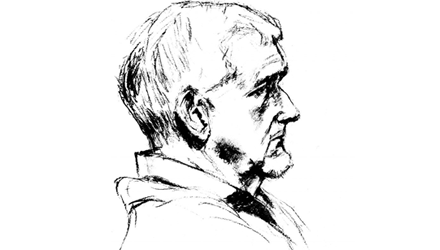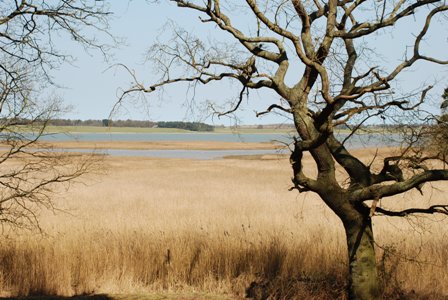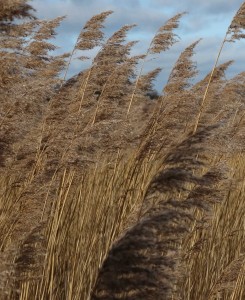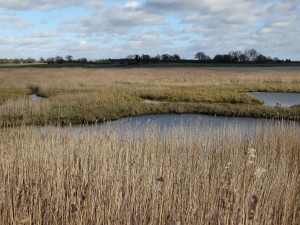The Blythburgh Estuary, such a wonderfully calm landscape, or is it?
PLEASE CLICK ON THE ARROW BUTTON ABOVE TO HEAR THIS POEM
The Blyth snakes down to the brine
soothing our senses as it idly curls
grazing past tall murmuring reeds,
stirred to voice by a gentle breeze.
We mishear that chafing whisper,
since Sixteen forty it has moaned
the cursed name of Sir Robert Brooke
– for this is Bloody Marsh.
The miller, William Turrould, petitioned
the King for years of the villager’s plight;
Squire Brooke had revoked their ancient rights
and brutalised lives to claim Common ground.
But Walberswick villagers just wouldn’t yield.
The sea had left their harbour, and only labour
on the hungry heathland and difficult marshland
could feed bony stock and malnourished families.
To discourage village cattle from Paul’s Fen
Brooke barracked his men in a boarded-up house
from where they emerged with several large dogs
to wound grazing cows and put them to flight.
For fighting and killing his paid ‘stout fellow’,
who had harassed villagers and savaged their beasts,
three Walberswick men were hung at Brooke’s clamour.
He then yoked nature to ‘modern’ agriculture.
Heathland enclosure formed ‘the sheep walks’
an idyllic term that belied a brutal starkness
of invasive earth-banks, several feet tall,
with which the gentry stole the Commons.
Today Conservation has enclosed the Common
and chain-link fencing criss-crosses heathland
dissecting the sheep-walks for Natural England –
partitioning vast tracts, with hardly a comment,
except from the reeds – that ceaselessly murmur.
Main information source Bloody Marsh by Peter Warner, Windgather Press, published 2000.



